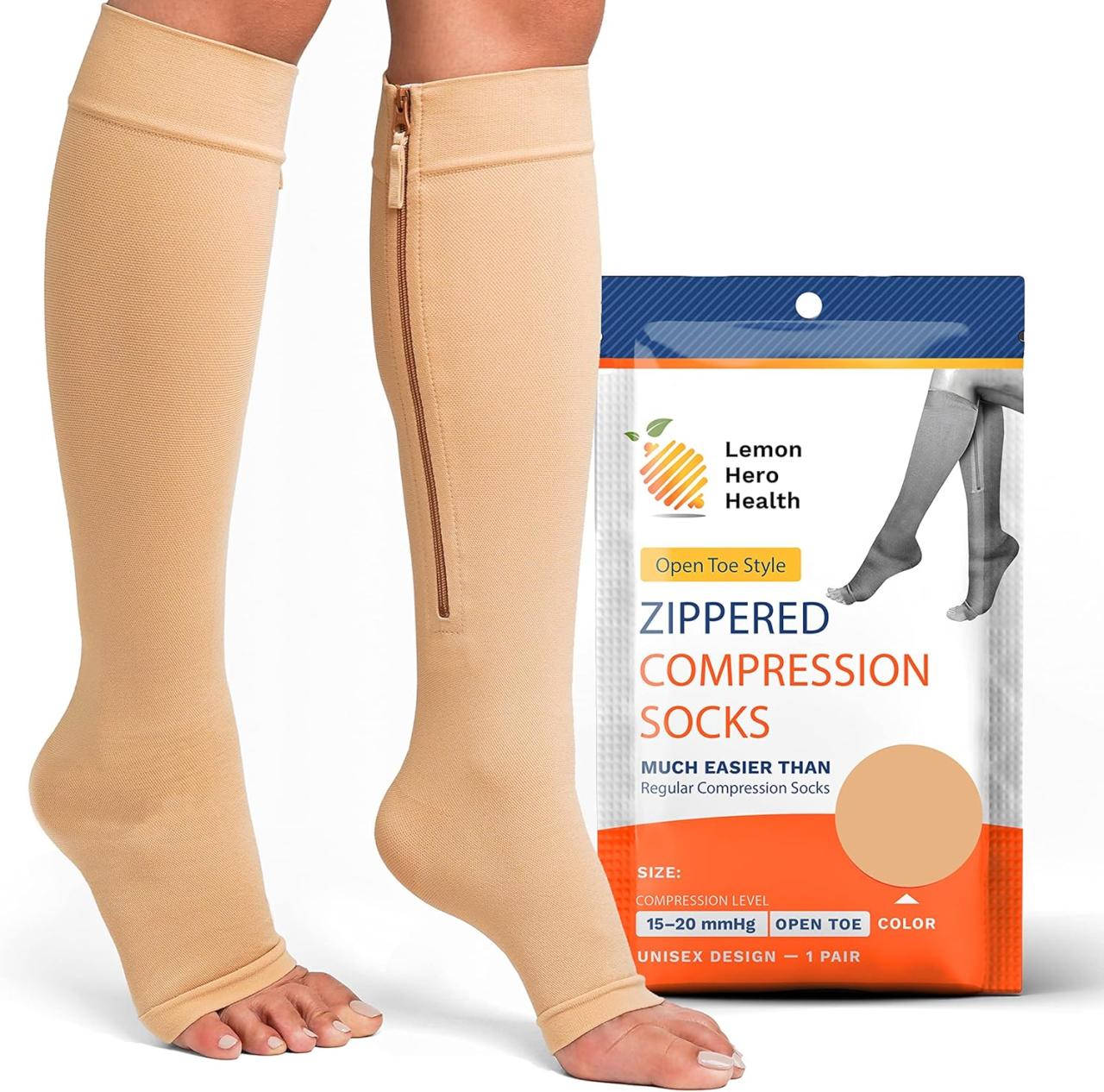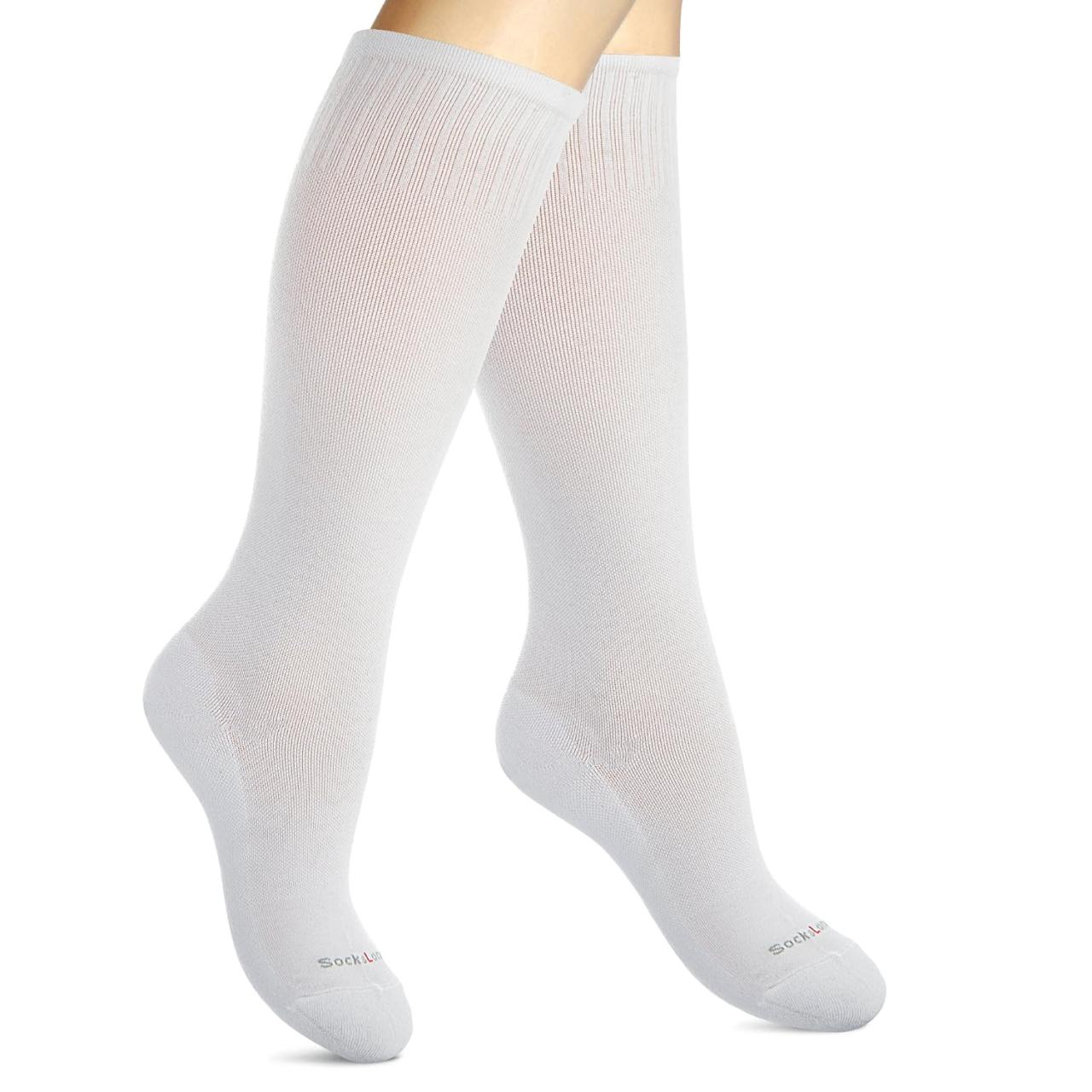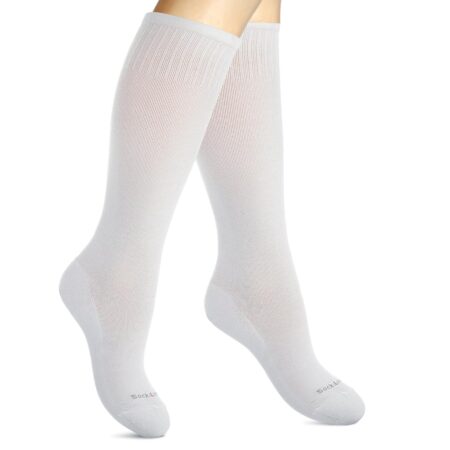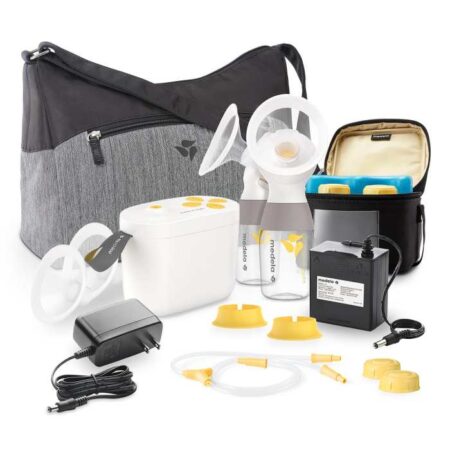
Cotton compression stockings are more than just a fashion statement; they’re a comfortable and supportive solution for a variety of needs. Think of them like a warm hug for your legs, providing gentle pressure to improve circulation, reduce swelling, and even help with recovery after an injury or surgery. From athletes looking for a performance boost to folks dealing with varicose veins, cotton compression stockings offer a natural and breathable way to feel your best.
These stockings are crafted from natural cotton fibers, making them soft, breathable, and comfortable to wear all day long. They come in different compression levels, so you can find the perfect fit for your individual needs. Whether you’re dealing with a specific medical condition or just want to give your legs a little extra support, cotton compression stockings can be a game-changer.
Introduction to Cotton Compression Stockings
Cotton compression stockings are a popular choice for people who need to manage swelling, improve circulation, or support their legs. These stockings gently squeeze your legs, helping to prevent blood from pooling in your feet and ankles. They can be a real lifesaver for those who experience discomfort or pain due to conditions like varicose veins, deep vein thrombosis (DVT), or edema.
Compression stockings are available in different levels of compression, ranging from light to extra-firm. The level of compression you need will depend on your individual condition and the advice of your doctor.
Types of Cotton Compression Stockings
Cotton compression stockings come in a variety of styles and lengths to suit different needs and preferences. Here are some of the most common types:
- Knee-high stockings: These stockings reach up to the knee and are ideal for people who need compression in their lower legs.
- Thigh-high stockings: These stockings reach up to the thigh and provide compression from the ankle to the upper thigh.
- Pantyhose: These stockings provide full-body compression, from the waist down to the toes.
- Open-toe stockings: These stockings have an open toe design, which can be more comfortable for people with sensitive feet or who need to wear specific footwear.
- Closed-toe stockings: These stockings have a closed toe design, which provides more coverage and support for the toes.
Common Uses for Cotton Compression Stockings
Cotton compression stockings are used for a variety of purposes, including:
- Varicose veins: Compression stockings can help to reduce the appearance of varicose veins and alleviate the associated pain and discomfort.
- Deep vein thrombosis (DVT): Compression stockings can help to prevent DVT, a serious condition that occurs when a blood clot forms in a deep vein, usually in the legs.
- Edema: Compression stockings can help to reduce swelling in the legs and ankles, a condition known as edema.
- Pregnancy: Compression stockings can help to alleviate leg swelling and discomfort during pregnancy.
- Post-surgery: Compression stockings can help to improve circulation and reduce swelling after surgery, especially in the legs.
- Travel: Compression stockings can help to prevent blood clots from forming during long flights or car trips.
Material and Construction
Cotton compression stockings are a popular choice for many people because they offer a comfortable and breathable option for managing various medical conditions. But what makes cotton so suitable for compression stockings, and how are they made?
Cotton’s Properties for Compression Stockings
Cotton is a natural fiber known for its softness, breathability, and moisture-wicking properties. These characteristics make it ideal for compression stockings because they contribute to comfort and prevent skin irritation.
- Softness: Cotton’s soft texture provides a gentle feel against the skin, minimizing discomfort and chafing, especially for prolonged wear.
- Breathability: Cotton fibers allow air to circulate, promoting ventilation and preventing excessive sweating. This helps keep the skin cool and dry, reducing the risk of fungal infections and skin irritation.
- Moisture-wicking: Cotton absorbs moisture away from the skin, keeping it dry and comfortable. This is crucial for individuals with conditions like edema, where excess fluid buildup can lead to discomfort and skin problems.
Manufacturing Process
The creation of cotton compression stockings involves a multi-step process:
- Yarn Production: Cotton fibers are spun into yarn, which is then knitted into a fabric with specific compression properties.
- Knitting: The knitted fabric is carefully constructed to provide the desired level of compression, typically measured in millimeters of mercury (mmHg).
- Finishing: The fabric undergoes finishing treatments, including dyeing, shaping, and adding elastic components for a secure fit.
- Quality Control: Each stocking undergoes quality checks to ensure it meets the required compression levels and conforms to industry standards.
Comparison with Other Materials
While cotton is a popular choice for compression stockings, other materials like nylon and spandex are also used.
- Nylon: Nylon is known for its durability and elasticity, making it a good option for stockings that need to withstand frequent wear and tear. However, nylon can be less breathable than cotton and may not be as comfortable for sensitive skin.
- Spandex: Spandex provides excellent stretch and recovery, ensuring a snug fit and maintaining compression over time. However, spandex can trap heat and moisture, leading to discomfort and potential skin irritation.
Cotton compression stockings offer a balance of comfort, breathability, and durability. They are a popular choice for individuals seeking a natural and comfortable option for managing various medical conditions.
Compression Levels and Benefits

Compression stockings are like superheroes for your legs, providing support and helping to improve circulation. They come in different levels of compression, each with its own unique powers.
Compression Levels
Compression levels are measured in millimeters of mercury (mmHg), which is a unit of pressure. The higher the mmHg, the stronger the compression.
- Light Compression (15-20 mmHg): This is the gentlest level of compression, often used for everyday wear to promote circulation and prevent fatigue. Think of it as a light hug for your legs. It’s like a chill friend who’s always there to lend a helping hand, but doesn’t go overboard.
- Medium Compression (20-30 mmHg): This level provides more support and is often recommended for people with mild to moderate varicose veins, edema, or DVT (deep vein thrombosis). It’s like the reliable friend who’s always there to pick you up when you’re down.
- Strong Compression (30-40 mmHg): This level is used for more severe conditions, such as lymphedema, venous ulcers, and post-thrombotic syndrome. It’s like the tough friend who can handle anything you throw at them.
- Very Strong Compression (40-50 mmHg): This is the highest level of compression and is typically prescribed by a doctor for specific medical conditions. It’s like the ultimate hero who saves the day.
Benefits of Compression Stockings
Compression stockings can offer a range of benefits, depending on the level of compression.
- Improved Circulation: Compression stockings help to squeeze your veins and improve blood flow back to your heart. This can help to reduce swelling, fatigue, and pain in your legs. It’s like giving your legs a mini workout, but without breaking a sweat.
- Reduced Swelling: Compression stockings can help to reduce edema (swelling) by preventing fluid from pooling in your legs. This can be especially helpful for people who stand or sit for long periods of time. It’s like a personal assistant for your legs, keeping them from getting bloated.
- Prevented Blood Clots: Compression stockings can help to prevent blood clots from forming in your legs, especially after surgery or if you have a history of blood clots. It’s like a bodyguard for your legs, protecting them from danger.
- Improved Healing: Compression stockings can help to improve healing in people with venous ulcers or other leg wounds. It’s like a magic potion for your legs, helping them to heal faster.
- Enhanced Performance: Compression stockings can help to improve athletic performance by reducing muscle fatigue and soreness. It’s like a secret weapon for athletes, giving them an edge over the competition.
Medical Conditions and Compression Levels, Cotton compression stockings
The right level of compression depends on the specific medical condition being treated.
- Varicose Veins: Light to medium compression stockings are typically recommended for varicose veins. They help to improve blood flow and reduce the appearance of the veins. It’s like giving your legs a spa treatment, making them look and feel their best.
- Edema: Light to medium compression stockings can help to reduce swelling in the legs and ankles. They are often used for people who stand or sit for long periods of time. It’s like a personal trainer for your legs, keeping them toned and sculpted.
- Deep Vein Thrombosis (DVT): Medium to strong compression stockings are often used to prevent blood clots from forming in the legs after surgery or if you have a history of DVT. It’s like a shield for your legs, protecting them from harmful clots.
- Lymphedema: Strong to very strong compression stockings are used to treat lymphedema, a condition that causes swelling due to a buildup of lymph fluid. It’s like a superhero for your legs, battling the forces of swelling.
- Venous Ulcers: Strong to very strong compression stockings are often used to help heal venous ulcers. They help to improve blood flow and reduce swelling, which can promote healing. It’s like a magic wand for your legs, healing them with a wave of compression.
Choosing the Right Stockings: Cotton Compression Stockings
Choosing the right compression stockings can be a little like picking out the perfect pair of jeans – you want them to fit just right, feel good, and be suitable for the occasion. There are a few key factors to consider to ensure you’re getting the best fit and support for your needs.
Compression Level
The compression level is the amount of pressure the stockings exert on your legs. It’s measured in millimeters of mercury (mmHg) and ranges from 15-30 mmHg for mild compression to 40-50 mmHg for firm compression. The right compression level depends on your specific needs and medical condition. For example, if you’re dealing with mild swelling, a lower compression level might be sufficient. However, if you have a more serious condition like deep vein thrombosis (DVT), you’ll likely need a higher compression level.
Intended Use
The intended use of the stockings also plays a role in choosing the right compression level. For example, if you’re using them for everyday wear to prevent leg fatigue, a mild compression level may be enough. However, if you’re using them for post-surgery recovery or to manage a medical condition, you’ll likely need a higher compression level.
Size
Finding the right size is crucial for ensuring your stockings provide the best support and comfort. Measure your legs at the widest part of your calf, just below your knee, and at your ankle. Use these measurements to find the right size according to the manufacturer’s sizing chart. It’s important to note that compression stockings should fit snugly but not too tightly. If they’re too tight, they can restrict blood flow and cause discomfort. If they’re too loose, they won’t provide the intended compression.
Material
Cotton compression stockings are a popular choice for their breathability and comfort. They’re a good option for people who have sensitive skin or are prone to allergies. However, cotton can sometimes absorb moisture and may not be as durable as other materials like nylon or spandex.
Consulting a Healthcare Professional
It’s always a good idea to consult with a healthcare professional before purchasing compression stockings, especially if you have a medical condition. They can help you determine the right compression level, size, and type of stockings for your needs. They can also provide guidance on how to properly wear and care for your stockings.
Finding Reputable Brands and Retailers
When it comes to compression stockings, quality matters. Look for brands that are known for their high-quality materials and construction. Reputable brands often offer a variety of compression levels, sizes, and styles to choose from. You can find compression stockings at medical supply stores, pharmacies, and online retailers. Be sure to read reviews from other customers before making a purchase.
Common Uses and Applications

Cotton compression stockings are versatile medical devices used to address various health conditions, providing therapeutic benefits by improving blood circulation and reducing swelling. Their applications extend across different medical fields, ranging from treating venous insufficiency to aiding post-operative recovery.
Medical Conditions, Compression Levels, and Benefits
Cotton compression stockings are designed to address a range of medical conditions, with varying compression levels tailored to specific needs. The table below provides a comprehensive overview of common medical conditions, recommended compression levels, types of cotton compression stockings, and their associated benefits.
| Medical Condition | Compression Level | Stockings Type | Benefits |
|---|---|---|---|
| Venous Insufficiency | 15-20 mmHg | Graduated Compression Stockings | Reduces leg swelling, improves blood circulation, alleviates leg pain and fatigue |
| Deep Vein Thrombosis (DVT) Prevention | 20-30 mmHg | Graduated Compression Stockings | Reduces blood clotting risk, prevents DVT formation, improves venous return |
| Post-Operative Recovery | 20-30 mmHg | Graduated Compression Stockings | Reduces swelling, improves circulation, promotes healing, minimizes scar formation |
| Lymphedema | 30-40 mmHg | High Compression Stockings | Reduces fluid buildup, improves lymphatic drainage, minimizes swelling and discomfort |
| Varicose Veins | 15-20 mmHg | Graduated Compression Stockings | Reduces vein prominence, improves circulation, alleviates pain and discomfort |
| Pregnancy-Related Edema | 15-20 mmHg | Graduated Compression Stockings | Reduces leg swelling, improves circulation, alleviates leg pain and fatigue |
| Diabetes-Related Foot Problems | 15-20 mmHg | Graduated Compression Stockings | Reduces foot swelling, improves circulation, promotes healing, prevents foot ulcers |
Potential Risks and Considerations

While cotton compression stockings are generally safe, there are some potential risks to consider, especially if you have sensitive skin or underlying health conditions. It’s crucial to understand these risks and take appropriate precautions to ensure a comfortable and safe experience.
Potential Risks
It’s important to be aware of the potential risks associated with wearing cotton compression stockings. These risks can include:
- Skin irritation or allergic reactions: Some people may experience skin irritation or allergic reactions to cotton or other materials used in compression stockings. This is more likely if you have sensitive skin or a history of allergies.
- Compression-related issues: Wearing compression stockings too tight or for extended periods can lead to circulation problems, especially if you have underlying circulatory conditions.
- Discomfort or pain: If the stockings are not the right size or fit, they can cause discomfort or pain.
Proper Fit and Compression Level
Proper fit and compression level are essential for avoiding complications and maximizing the benefits of compression stockings. Here’s what to keep in mind:
- Choosing the right size: Measure your legs and consult a sizing chart to ensure you choose the correct size. Compression stockings that are too small can restrict blood flow, while those that are too large may not provide adequate compression.
- Compression level: Compression stockings are categorized by compression levels, ranging from mild to extra-firm. The appropriate level depends on your individual needs and medical condition. It’s important to consult your doctor or a healthcare professional to determine the right level of compression for you.
- Wearing instructions: Follow the manufacturer’s instructions for wearing and caring for your compression stockings. This may include guidelines on when to wear them, how long to wear them for, and how to wash them.
Managing Potential Risks
Here are some tips for managing potential risks associated with wearing cotton compression stockings:
- Check for allergies: Before wearing new compression stockings, check for any potential allergies by applying a small amount of fabric to your skin and observing for any reactions.
- Start with short wear times: When you first start wearing compression stockings, start with short wear times and gradually increase the duration as your skin adjusts.
- Monitor for any signs of problems: Pay attention to any signs of discomfort, pain, or skin irritation while wearing compression stockings. If you experience any problems, remove the stockings and consult your doctor.
Seeking Professional Advice
If you have any concerns about wearing cotton compression stockings, it’s important to seek professional advice from your doctor or a healthcare professional. They can help you determine if compression stockings are right for you, choose the appropriate size and compression level, and provide guidance on managing potential risks.
Final Wrap-Up
Cotton compression stockings are a versatile and beneficial option for anyone looking to improve their circulation, reduce swelling, or simply feel more comfortable. With a variety of compression levels, types, and styles to choose from, there’s a perfect pair out there for you. So, step up your comfort game and discover the benefits of cotton compression stockings!
Detailed FAQs
Are cotton compression stockings safe for everyone?
It’s always best to consult with your doctor before wearing compression stockings, especially if you have any underlying medical conditions.
How often should I wear cotton compression stockings?
The frequency of wearing compression stockings depends on your individual needs and your doctor’s recommendations.
How do I know what compression level I need?
Your doctor can help you determine the appropriate compression level based on your medical condition and needs.
Where can I find reputable brands of cotton compression stockings?
You can find high-quality cotton compression stockings at medical supply stores, pharmacies, and online retailers.





